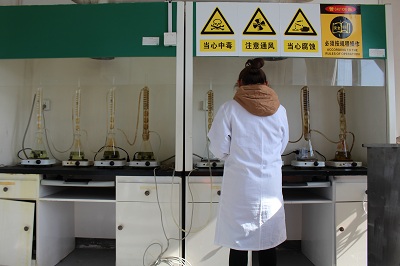corrosion test![]()
Valve detection![]()
Metallographic analysis![]()
component analysis![]()
Mechanical test![]()
failure analysis![]()
Nondestructive flaw detection![]()

2016-11-11 Rongda test 2293 times

Detection Purpose: Check the resistance of materials to intercrystalline corrosion
Detection range: Aluminum and aluminum alloy, stainless steel, nickel - based alloy and other metals and alloys
A metal having a very active grain boundary and local corrosion occurring at or near the grain boundary, with relatively little corrosion of the grain grains. Intercrystalline corrosion causes metal to shatter (break apart grains) and also causes the metal to lose strength. Intercrystalline corrosion is caused by the increase or decrease of impurity in grain boundary or an alloy element in grain boundary.
Note: it is mainly due to the difference of chemical composition between grain surface and interior, as well as the existence of grain boundary impurity or internal stress. Intercrystalline corrosion destroys the intergranular bond and greatly reduces the mechanical strength of the metal. Moreover, after corrosion occurs, the surface of metal and alloy still maintains a certain metallic luster without any signs of damage. However, the adhesion between grains is significantly weakened, and the mechanical properties deteriorate, so it is a very dangerous corrosion. It is usually found in brass, durium alloy and some stainless steel and nickel base alloys.
Intercrystalline corrosion characteristics
When a metal is in contact with the surrounding medium, chemical and electrochemical reactions occur which cause damage called metal corrosion. From the thermodynamic point of view, with the exception of a few precious metals (such as Au and Pt), all the other metals have a tendency to transform into ions and corrosion occurs between grains. Corrosion between the grain is along the grain boundaries between metal internal extension, it is a kind of selective corrosion, different from general corrosion, corrosion is not starting from the outer surface, but is concentrated in the grain boundary area of the metal, deep inside the metal along the grain boundaries, make the corrosion on the metal surface can't see any signs, losing its mechanical properties, the strength of the metal is almost completely lost, serious and even loss of metal.
Intercrystalline corrosion mechanism
Most of the most common intergranular corrosion occurs in weak oxidizing or oxidizing media. Therefore, most corrosion cases can be explained by dilution theory, which is generally accepted by people. & other; Dilution & throughout; Is a general term, to stainless steel and molybdenum, chromium, nickel alloy is to point to poor chromium, to lead copper alloy is to point to poor copper. This theory can explain the intercrystalline corrosion of austenitic stainless steel, the tempering temperature and time, the carbon content of the steel, the content of carbides forming elements, and the influence of alloying elements (Cr, Mo, Si) to the grain boundary corrosion of the steel.